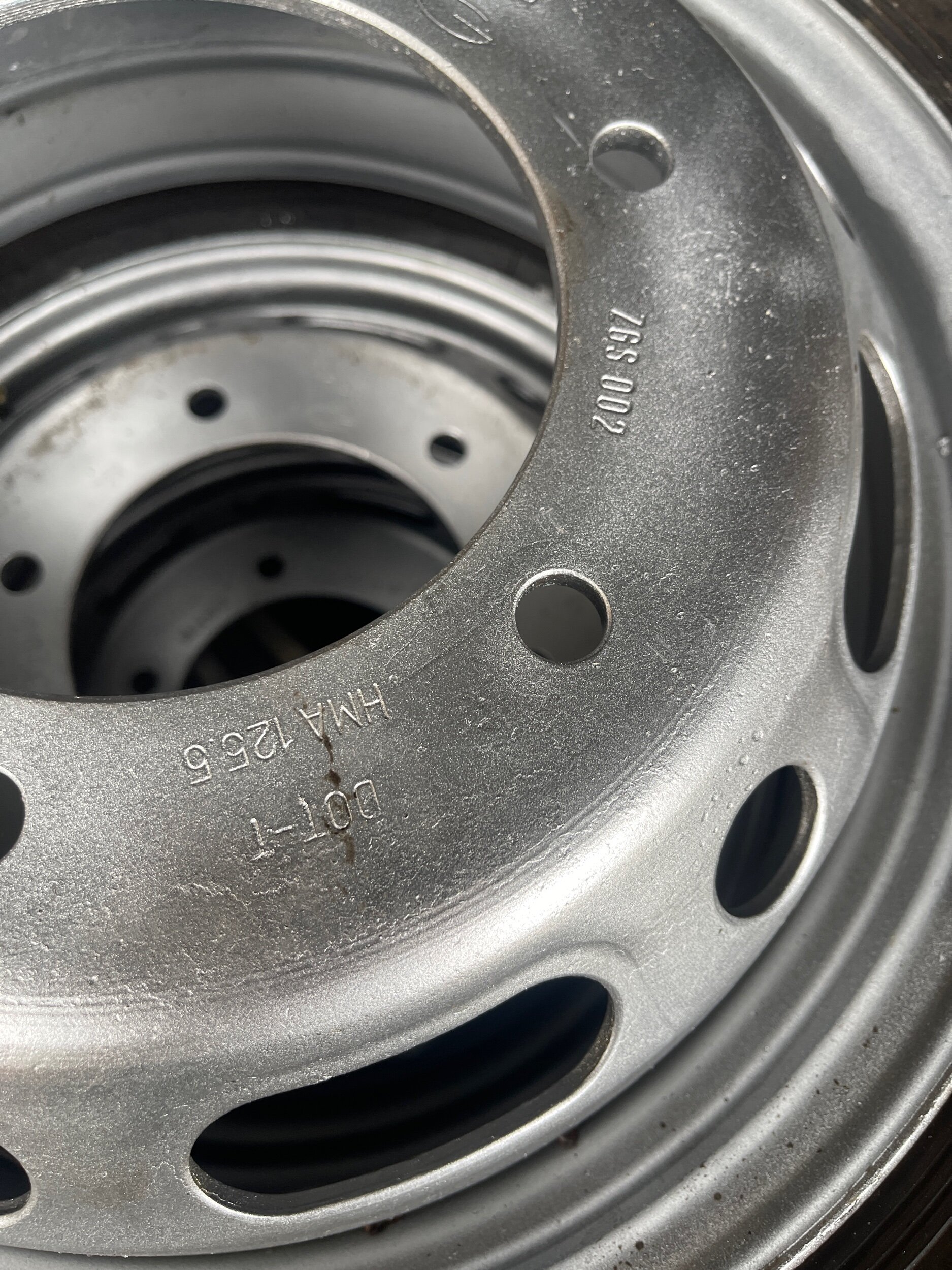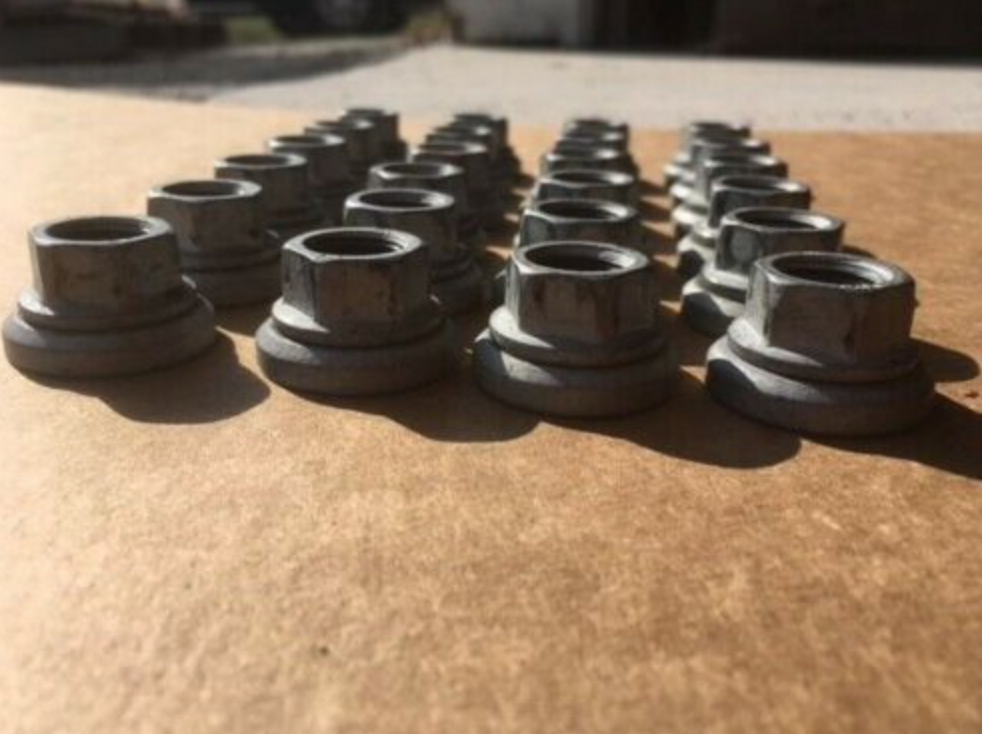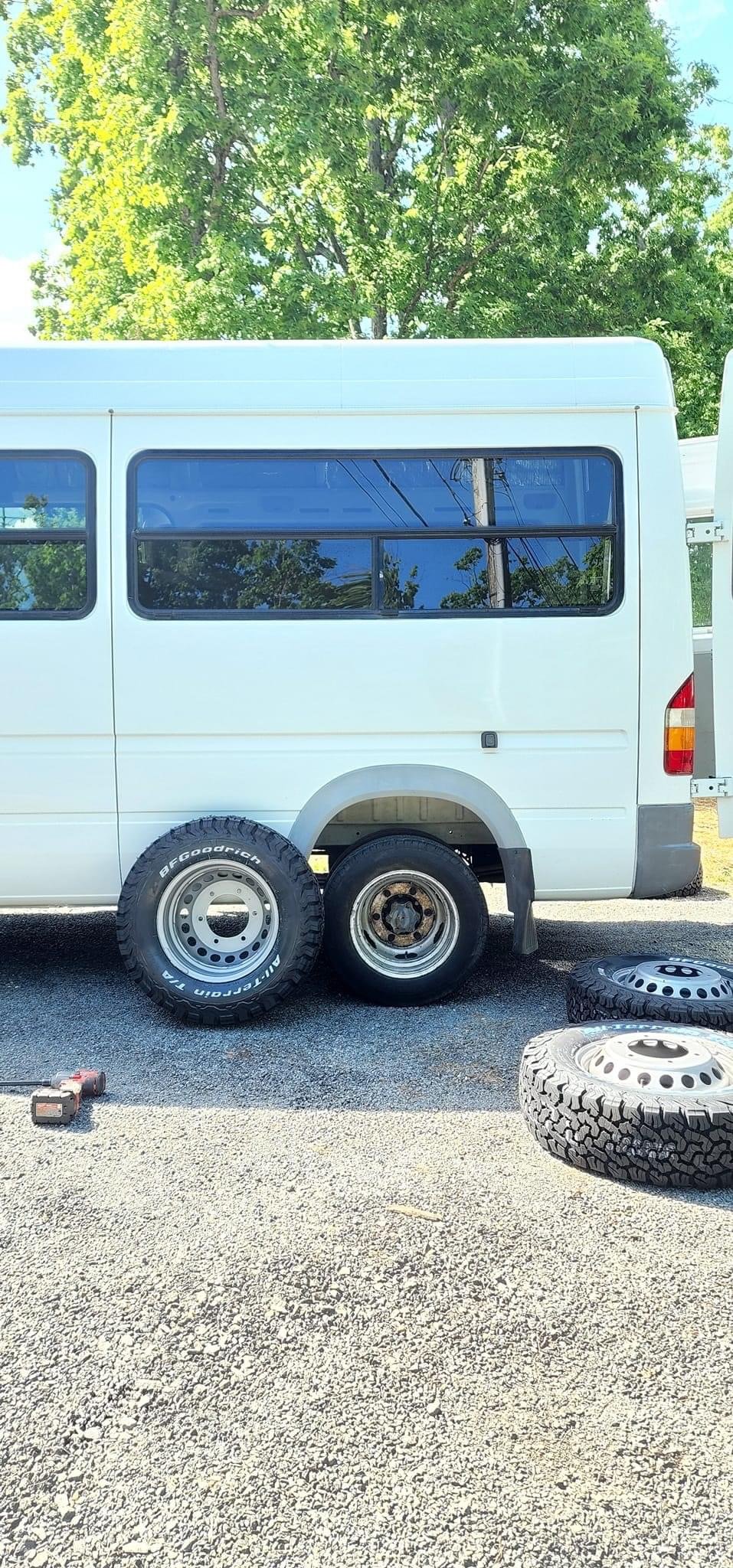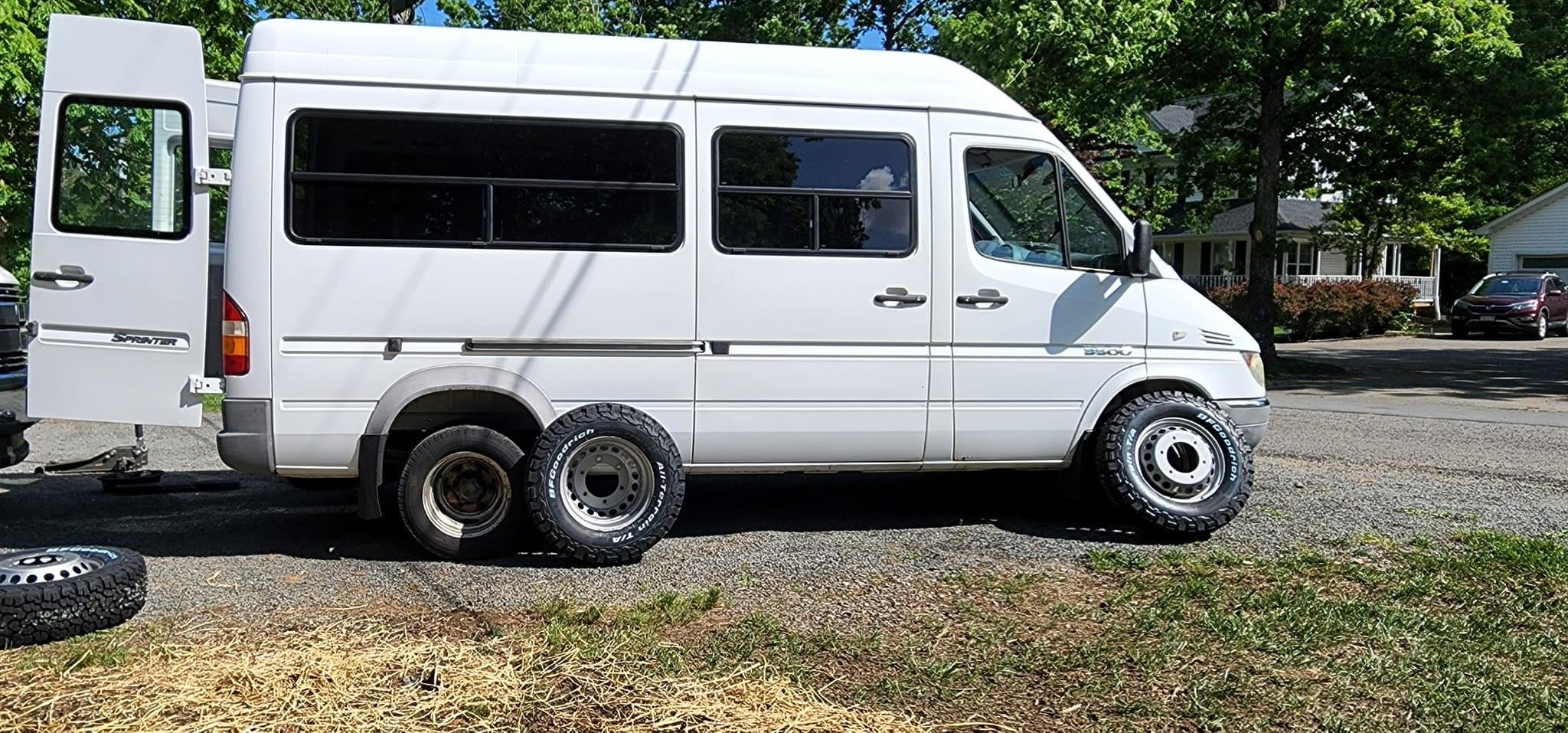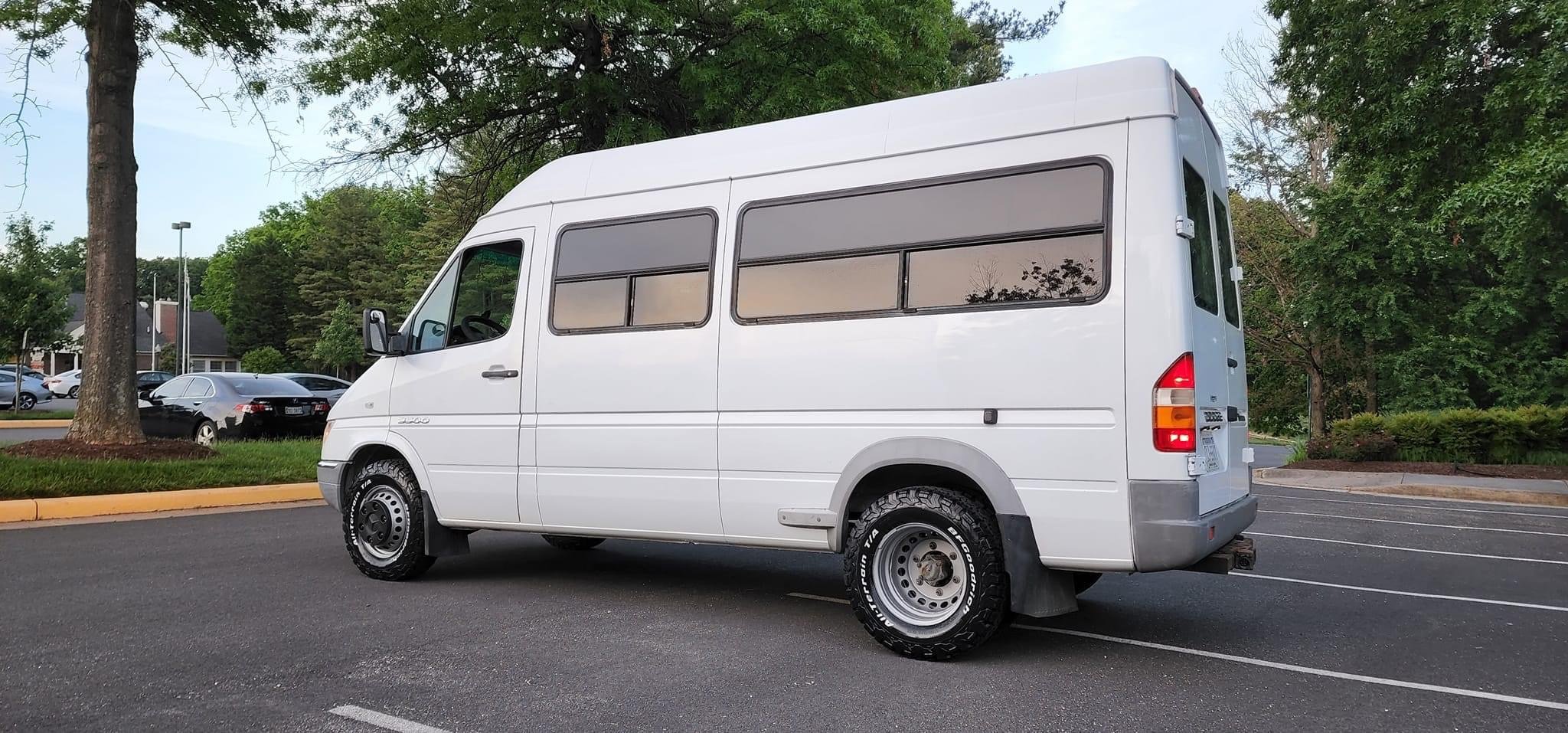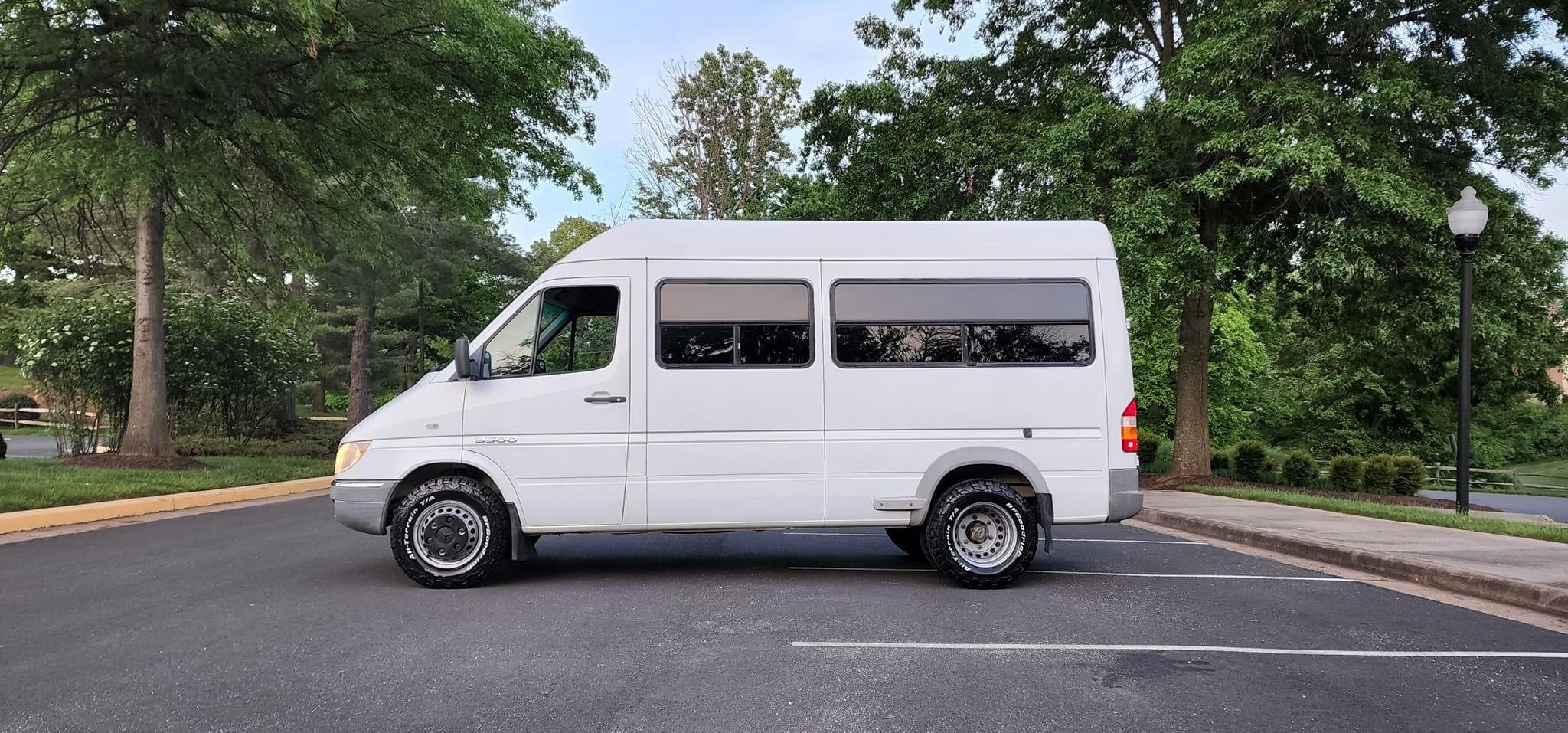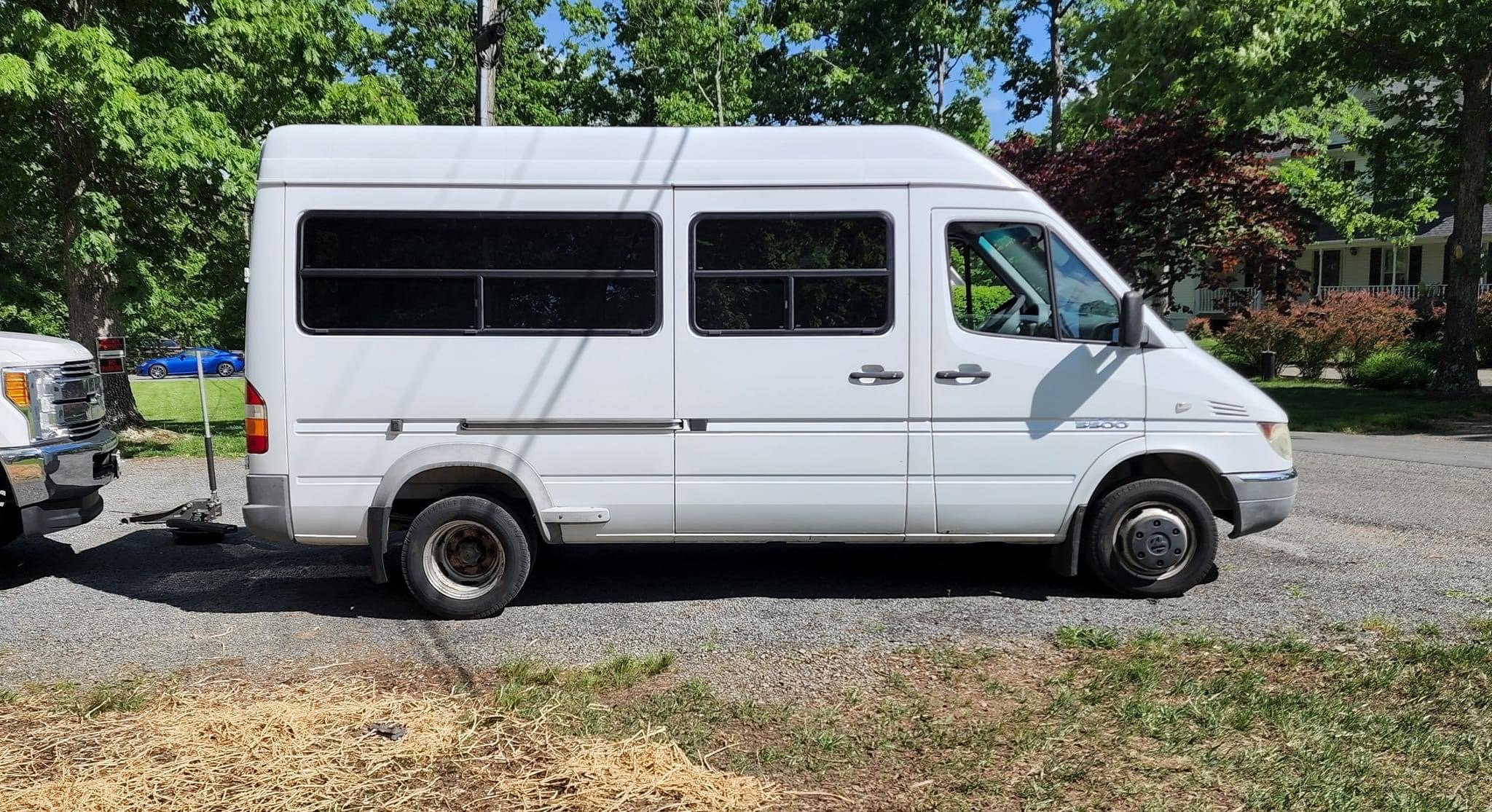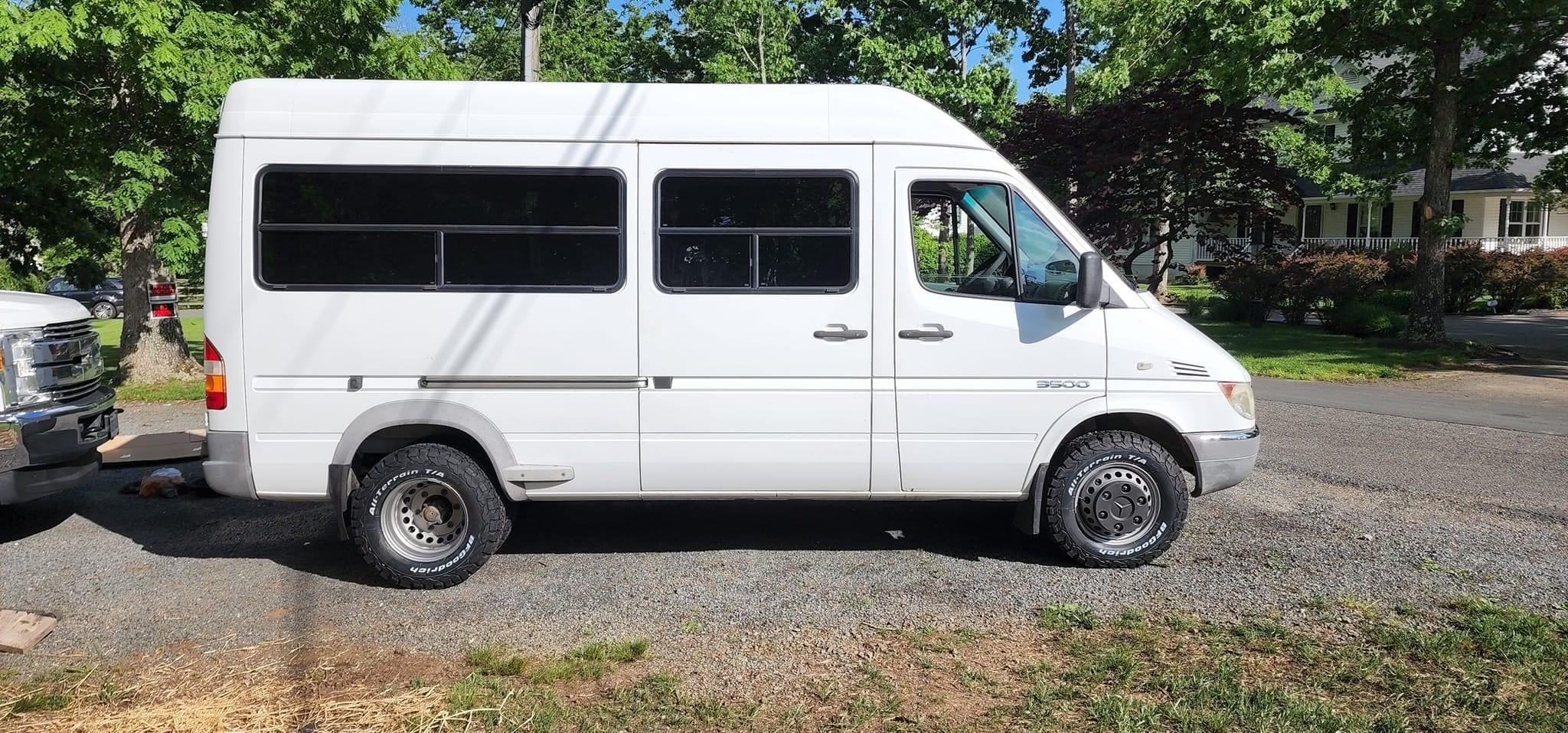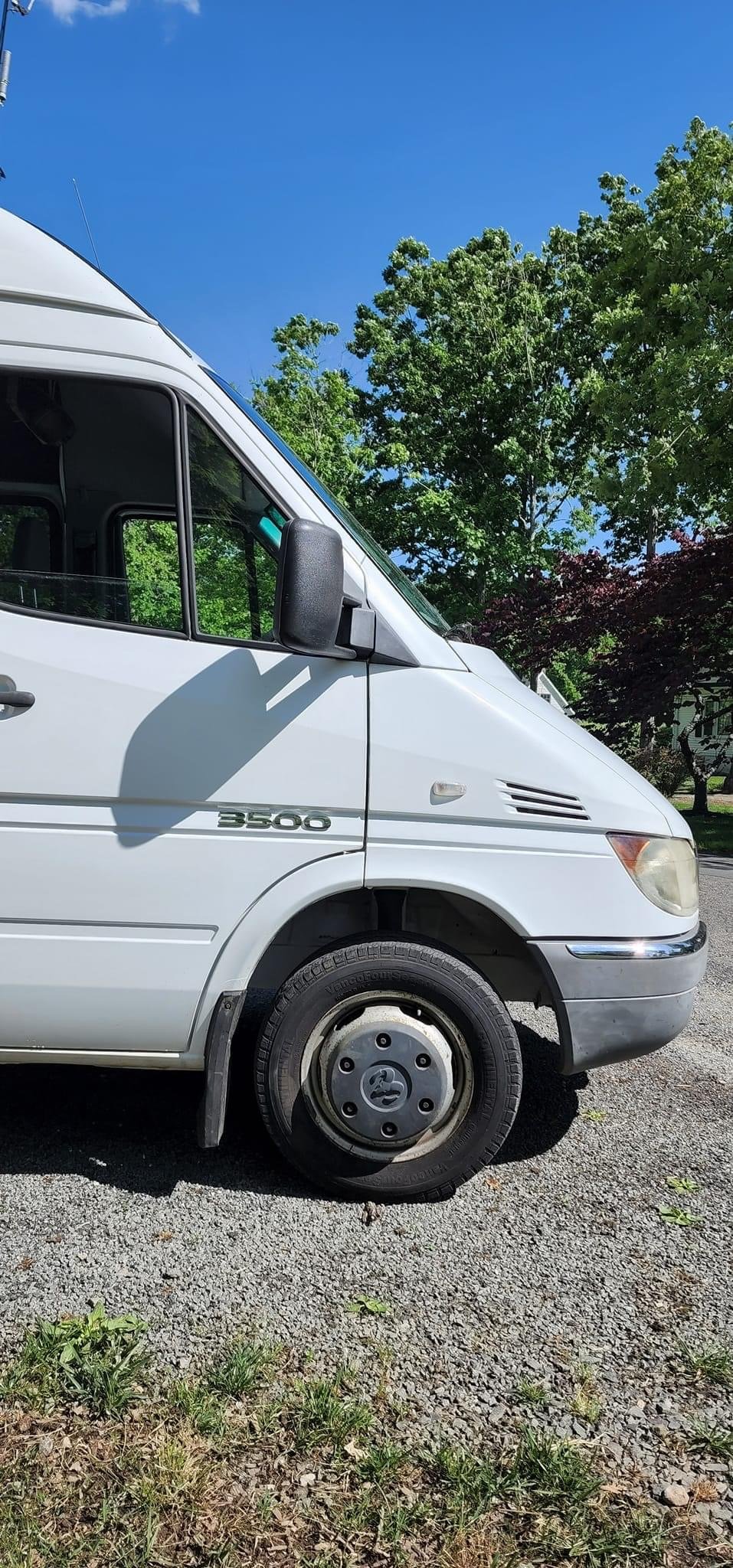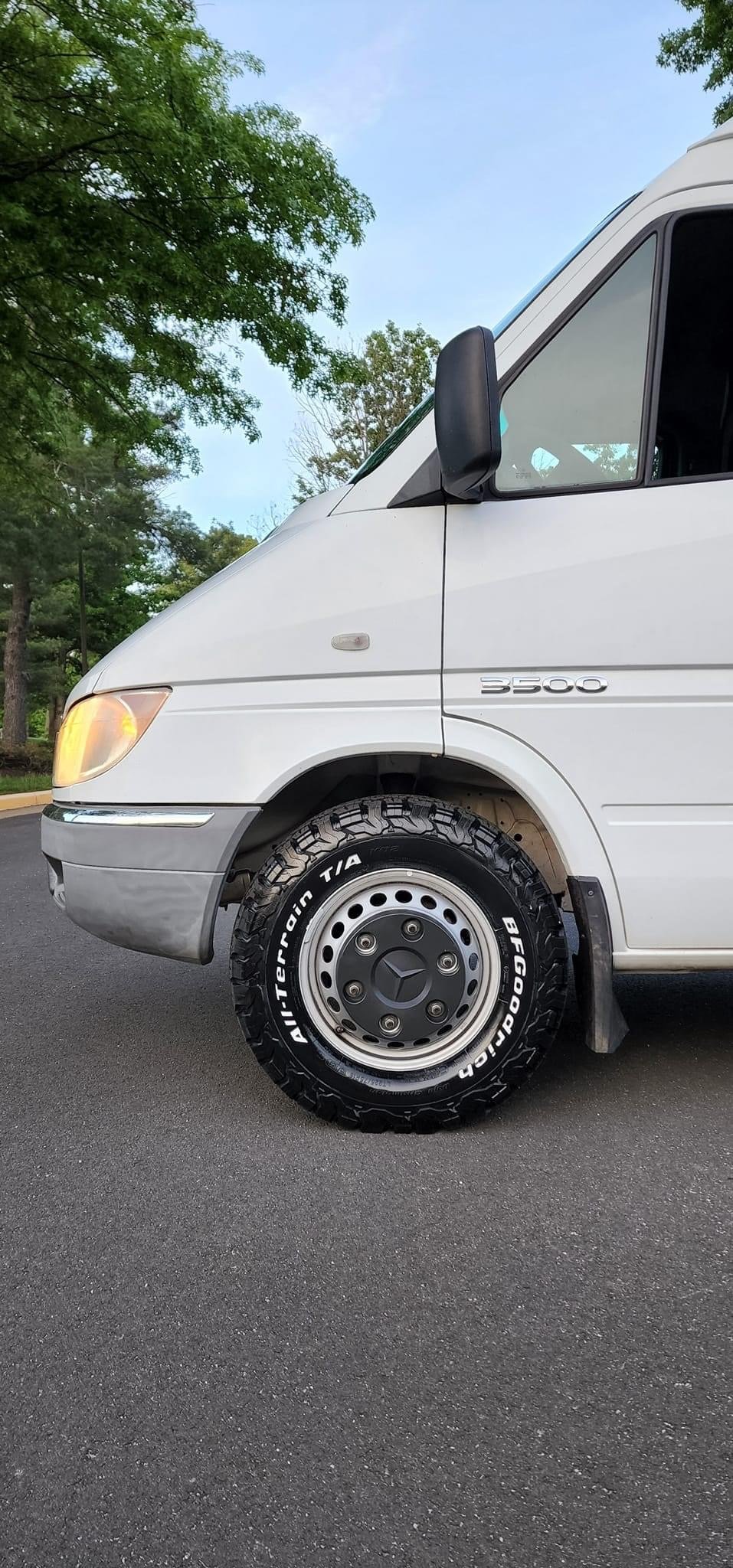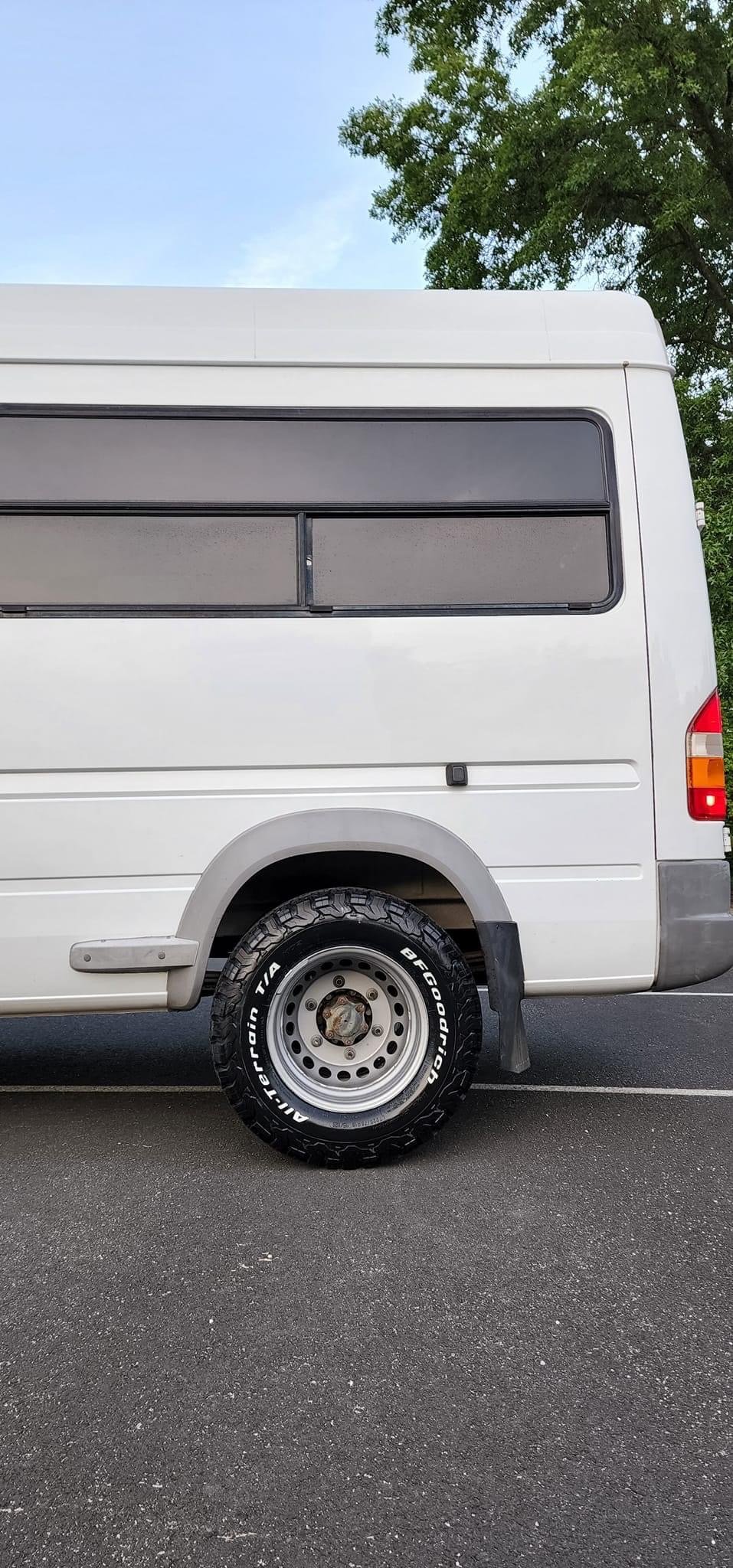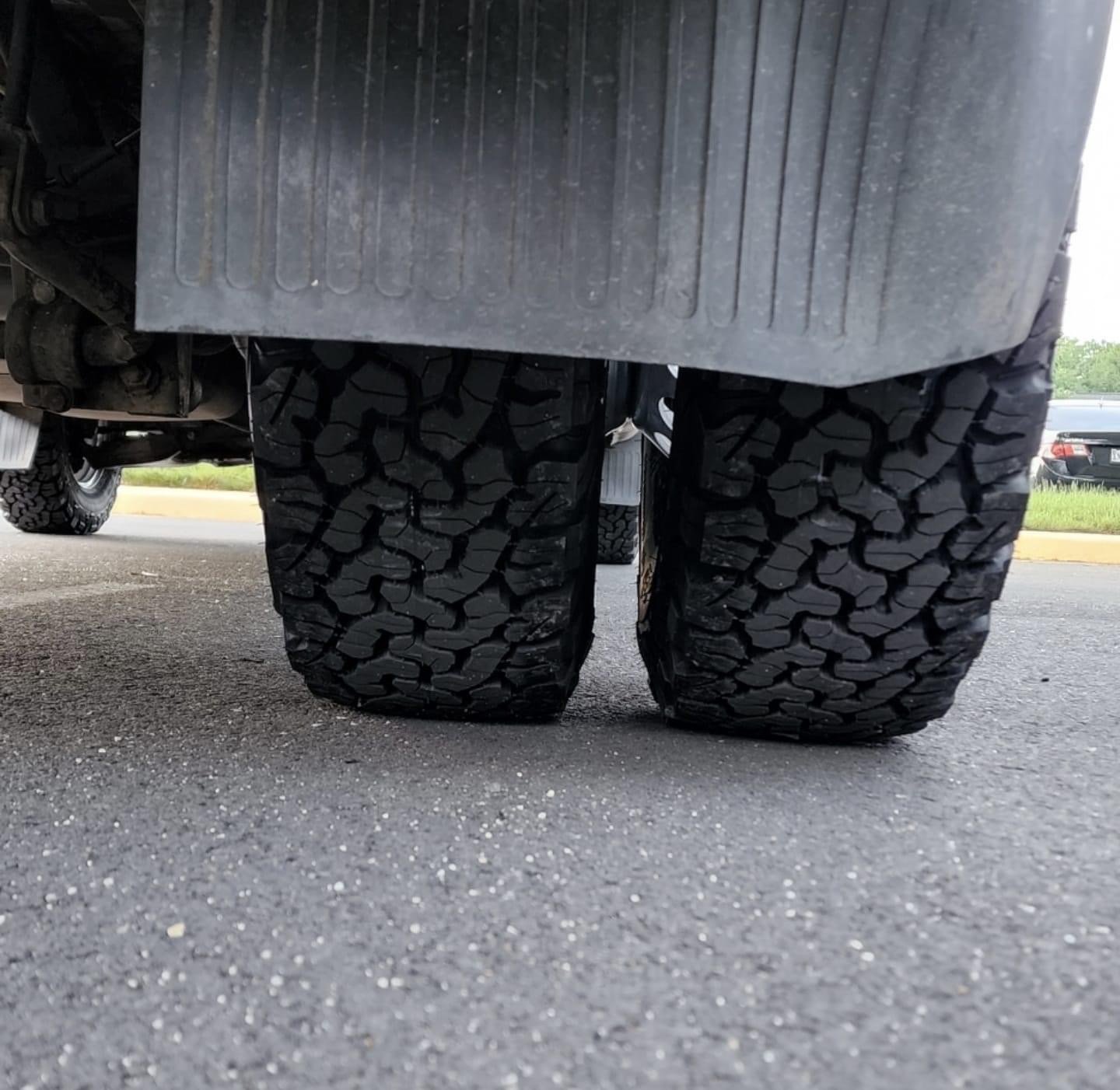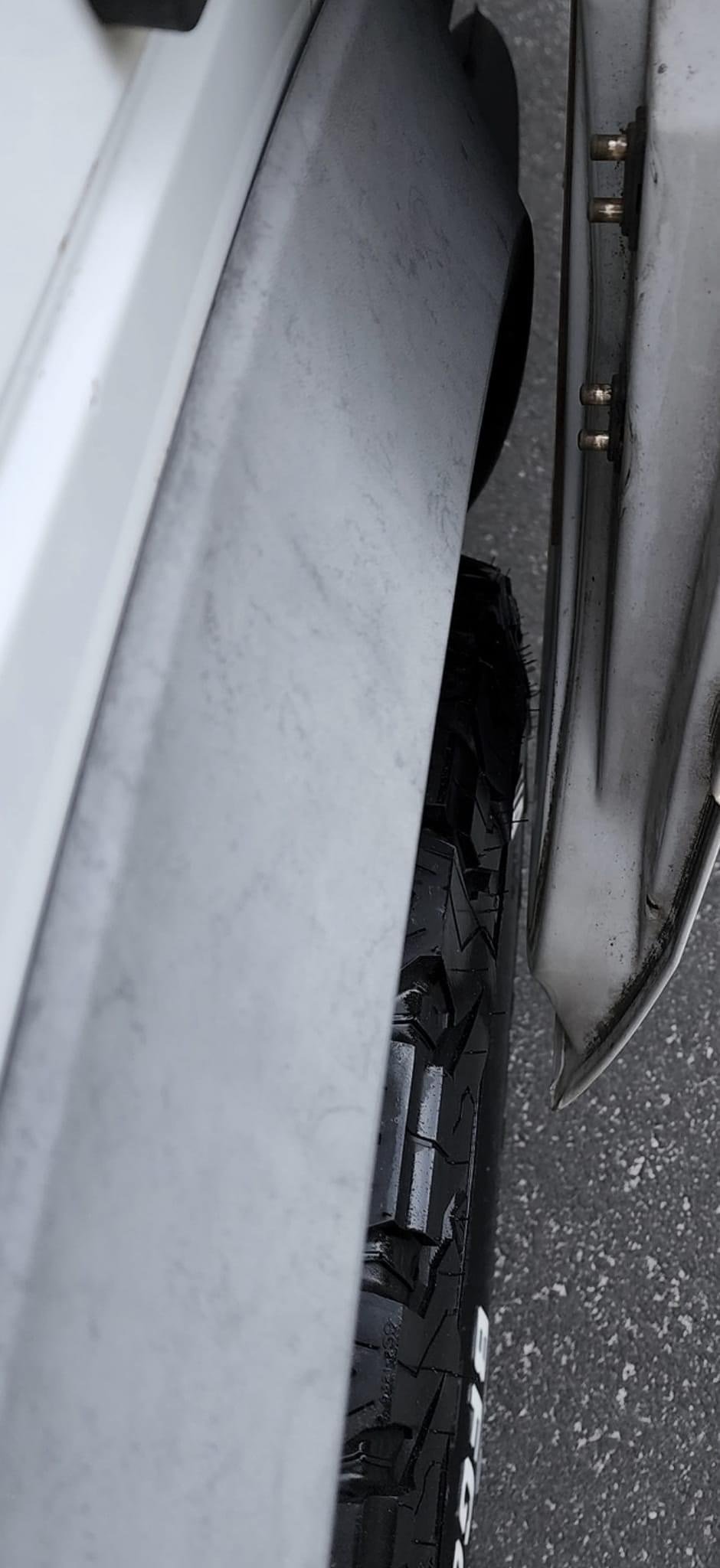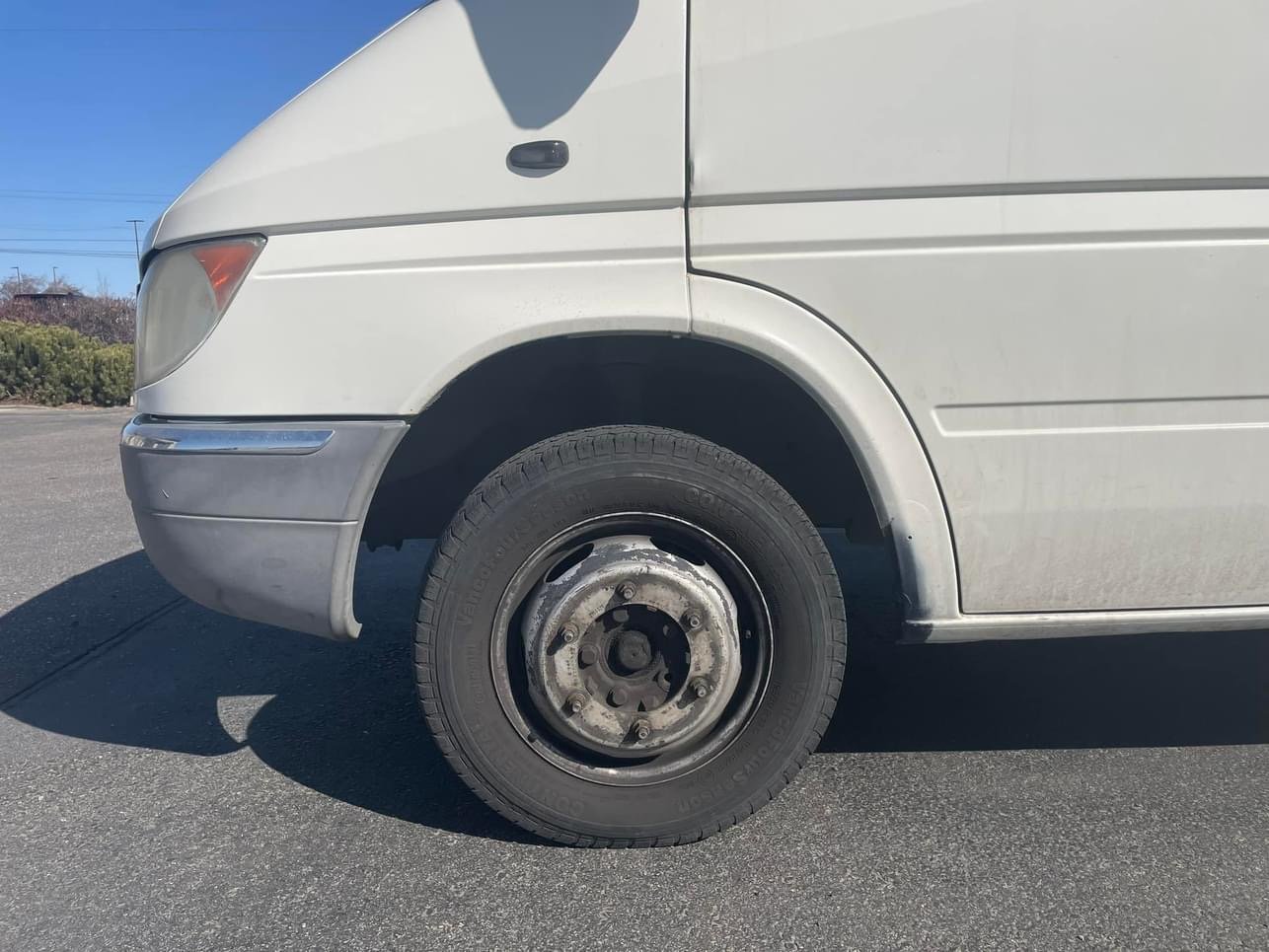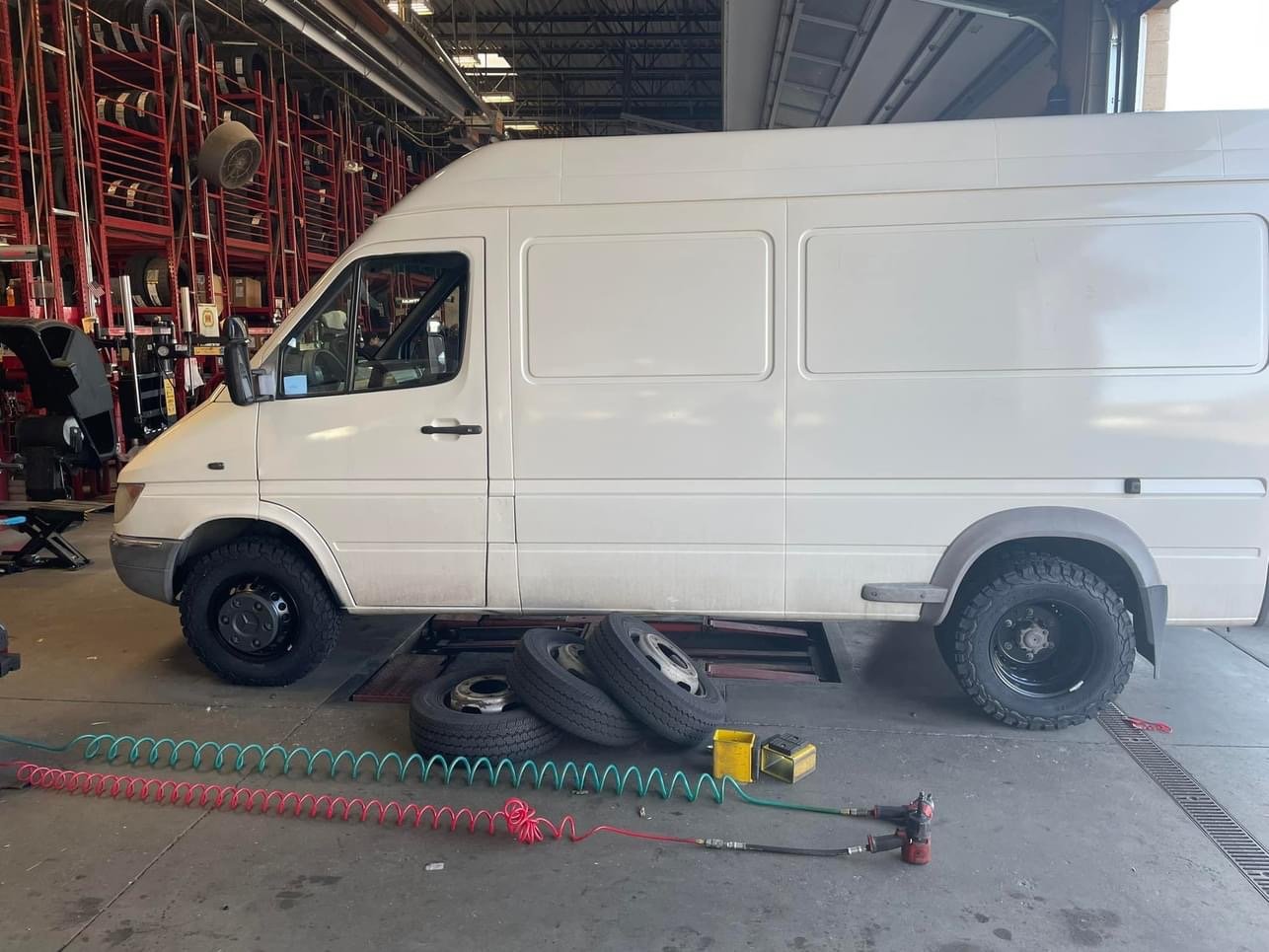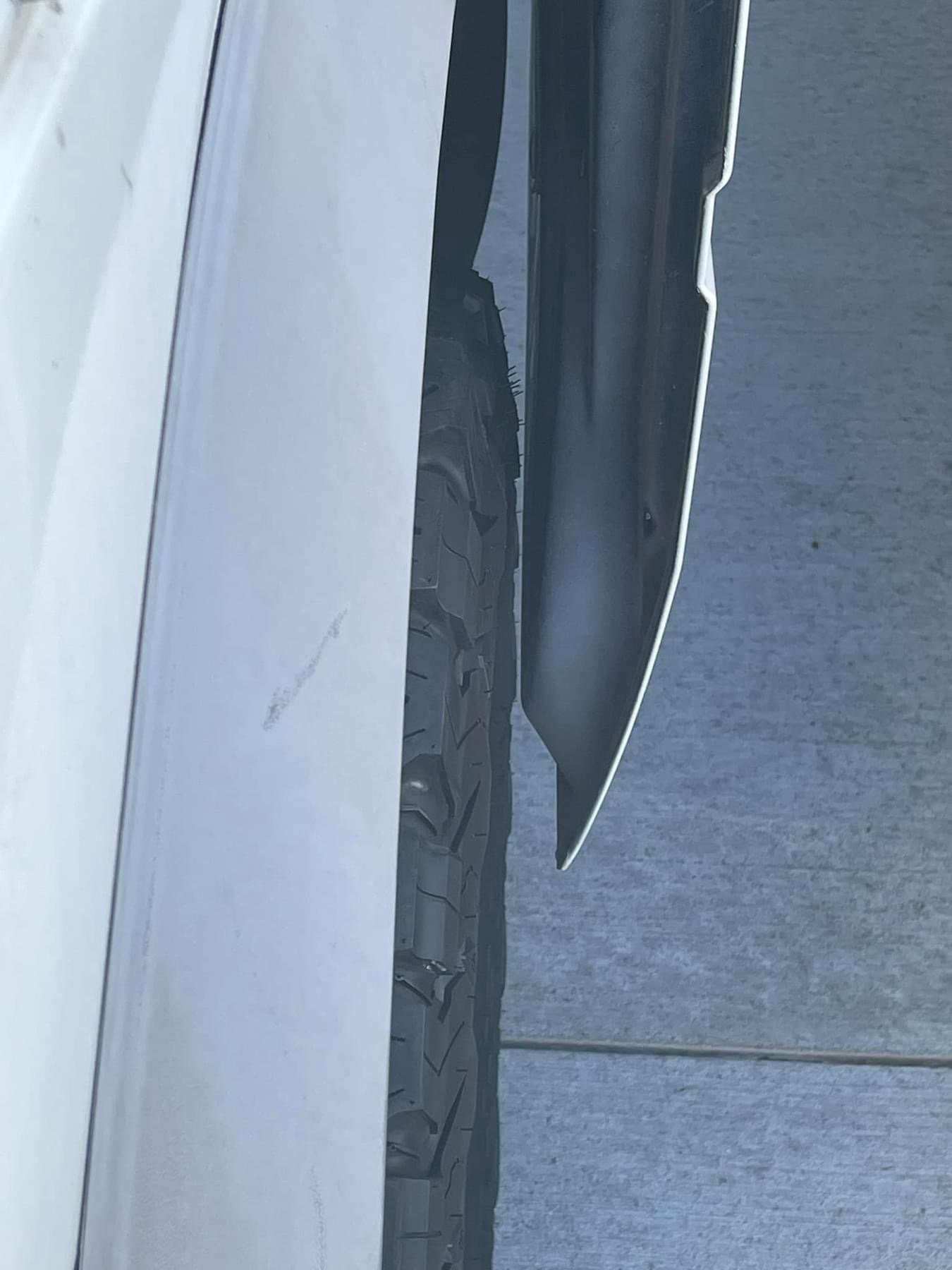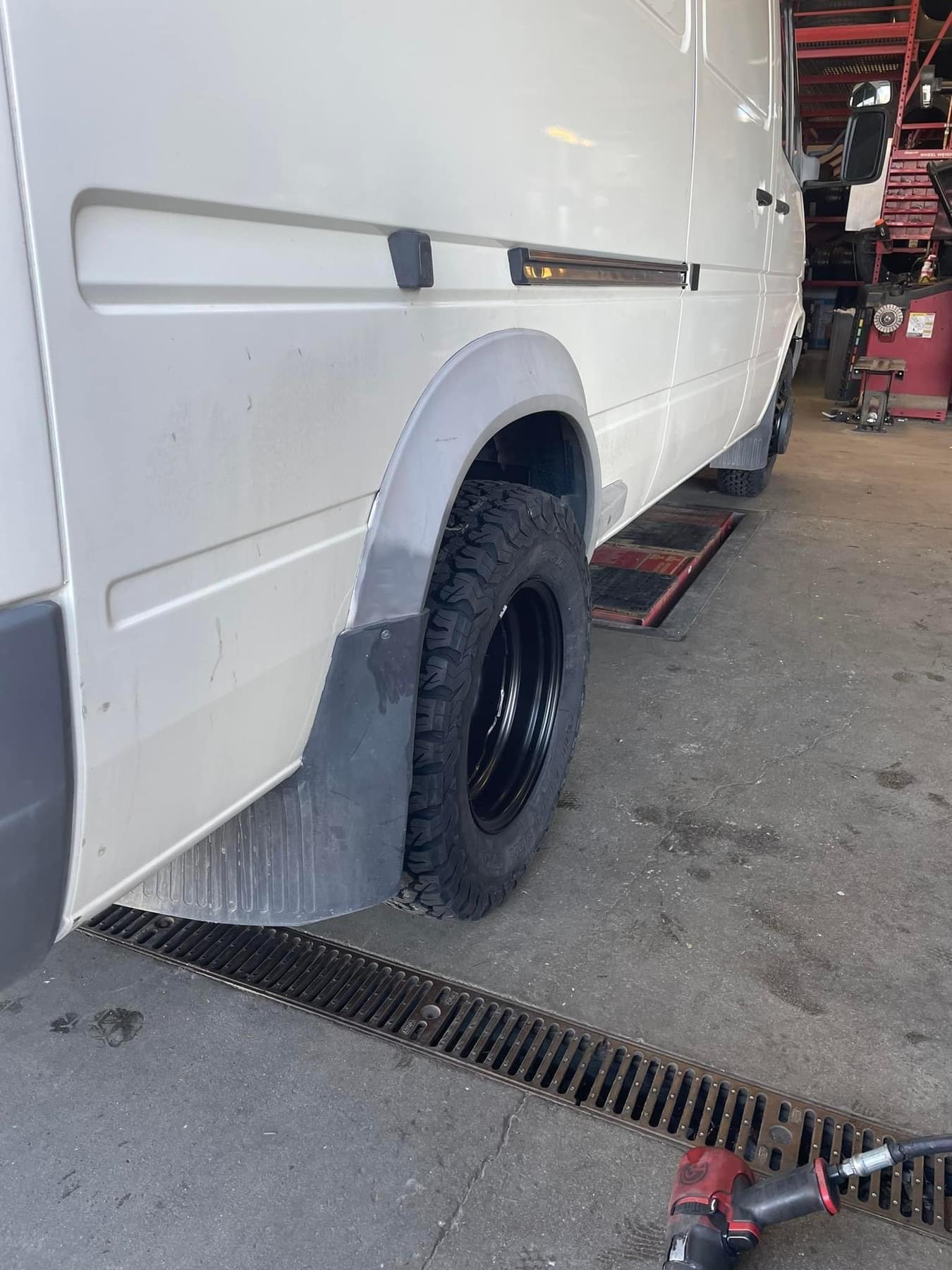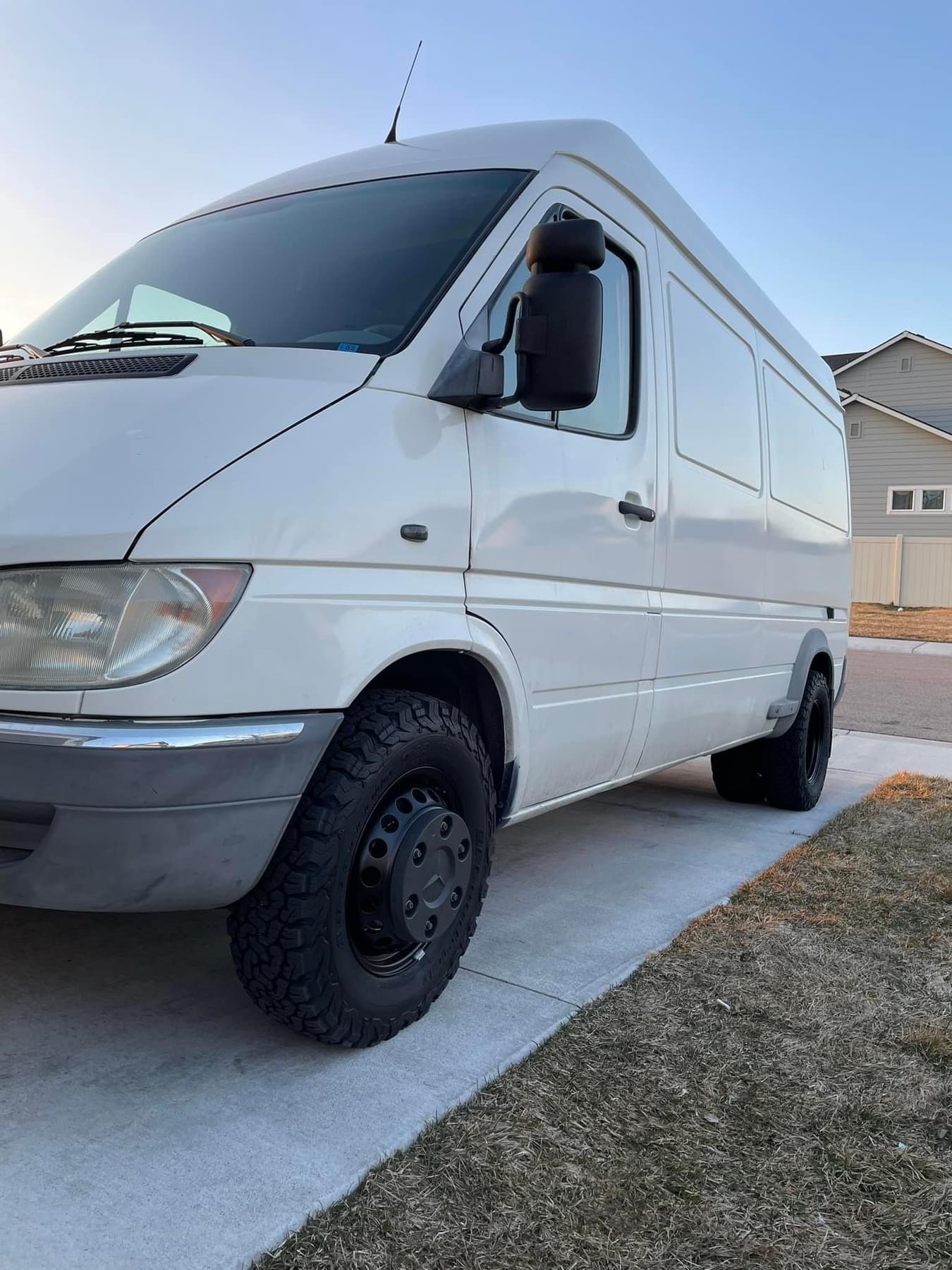Larger T1N dually tires
So you have trouble finding E Load Rated tires to fit your Dodge or Freightliner (Mercedes) Sprinter 3500. The stock OEM 15” wheels size 195/70R15 really is an odd one with only 2 available Load Range E tires (last we checked). So it’s not so easy to run much else.
Continental Vanco 4 Season
General Grabber HD
One option would be to find a 15" tire that fits the stock rims that is 29.4" diameter instead of the stock 25.7" diameter, but our research has only shown that this size in Load Rang E only comes as a trailer tire. <sad trombone song>
So now you see why going to a 16” wheel opens up tire choice options.
But don’t T1N wheels only have 5 lugs and NV3 vans have 6?
Yes and no. When it comes to the regular 2500 version of the Sprinter vans the T1N has a bolt pattern of 5x130 and the NVC3 vans have a 6x130 bolt pattern.
But with the Dually vans (3500) both the T1N and NVC3 have the same carrier. for dually wheels. The NCV3 3500 wheels are 16" and will bolt right onto a T1N 3500. The one caveat is that you will likely need the matching NCV3 lug nuts.
As with T1Ns, all 6 wheels (7 with the spare) are the same. They are 5 1/2" wide, so 215 width tires are OEM “max” per industry standards. Running larger 225 width and even 235 is very common.
A common size we see is 225/75R16 and that’s what we run.
🗒 Note: 215/85/16 also fit. They will just be narrower but also a little larger/taller.
So why bother going to a 16” wheel?
👎🏼 Cons: potentially increased fuel consumption in a city driving (KO2 tread isn’t great for fuel economy)
👍🏼 Pros: improved ride quality, potentially improved highway mileage, increased road clearance, better tire selection in 16" size
🛞 DETAILS:
The largest tire sizes that fit without a suspension lift are
215/85R16 or 225/75R16
225/75R16 BF Goodrich All-terrain TA KO2
NVC3 3500 Lug Nuts
Shown here is the 225/75R16 BF Goodrich All-terrain TA KO2. We’ve had these same tires on our 2013 Crew, our T1N 118, our 2013 Sportsmobile and 2020 4x4. Most at the 30,000 miles mark and like them enough for all around use. Not great in the snow. Read our review on how they do in the snow but look great and can be run at low pressures effectively.
They wear well, quiet, good on pavement, mediocre in the snow and rain. But the main reason is that they come is so many sizes. Even in Load Range E. This is why they tend to be the go to AT tire of choice.
🔩 Lug Nuts: This is important. Old lug nuts and cone shaped washers will not work with 16" steel wheels from newer vans. You have to use appropriate Lug nuts, all 24 of them, no washers are required. Here is the link:
And of course, to prove your friends that your beloved van IS NOT DOOOODGE!, a set of nice three point star hub caps will do nicely:
If you prefer the 215/85R16 tire size here is a great deal. Take off Rims with mounted Continetal tires 215/85R16 - $168 shipped
💨 AIR VALVE EXTENDERS: If you have them on your 15" wheels they will work with the 16" rim just fine. Please keep in mind: if not properly secured the heavy metal extenders increase in weight with centrifugal force when vehicle is in motion. That will cause damage to the valve stem over time. 1.5" gromets work well for avoiding being stuck on a side of the road with a flat tire and vultures circuling above your head.
And yes, do not buy flexible braided hose extenders with a meety steel bracket. They are crap and the weight of the bracket will cause your wheels to be out of balance.
Other Considerations
When going to a wider profile tire, you reduce the gap between your two rear tires. Airing down for soft surface traction will be more limited and will cause the tires to possibly touch or possibly capture stones. You can compensate for these somewhat when you go to higher tire pressures, but then ride quality will suffer off road. Everything is a balance. An option is to go with a wider tyre on the front axle and use narrower tyres on the rear, then carry (at least) a narrow spare. But we avoid this and like to have all our wheels match is tire size.
Also, as you increase the tire diameter, the torque at the axle will increase/decrease proportionately with changes to the rolling diameter of your wheels. The van can appear “heavier“ to both the drive train and the braking system (i.e. it can seem like it takes longer to get going off the line). The good news is that the TCM should adapt automatically and adjust your shift points, and the engine will operate at a slightly higher LOD value, but it will turn slower and be making the same horsepower for a given road speed. So you may see a slight improvement in fuel consumption on highway driving, all else being equal. Brakes will be working harder, since the taller tires will have more of a flywheel effect to keep rolling. So here again, the van will feel proportionately “heavier” and stopping distance may go up a little, but panic stops will remain limited by traction more than by braking power. That said, the ESP calibration would need to change, since the system would tend to under-react when making emergency yaw corrections.
💡Pro Tip: always apply a light coat of antiseize to the metal parts of the rims that come in a contact with other metal parts. Metal loves to fuse itself together from oxidization and will keep the moisture out.
End result is pretty kick ass. 💪
🗒 Note:. It’s worth noting that Winnebagos with a Dually setup came stock with LT225/75R16 E mounted on 16x6 wheels. So if you’re ever at a dealer or tire shop that will only mount ‘stock’ sized tires, use this as a reference.
Photos: Art Reyz via FB


